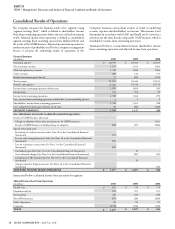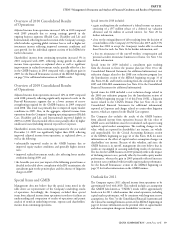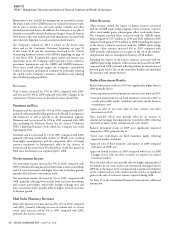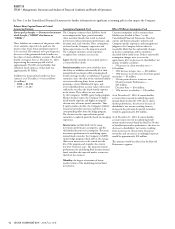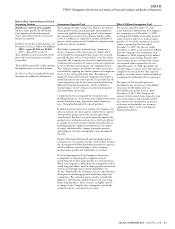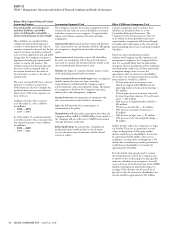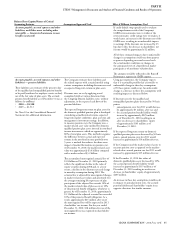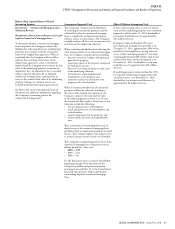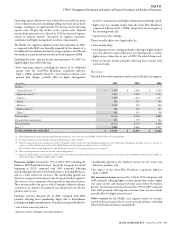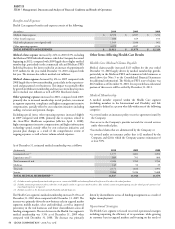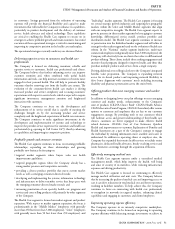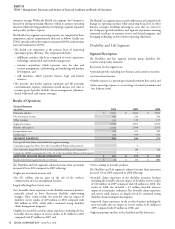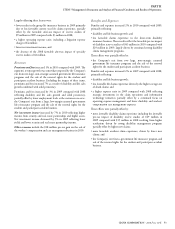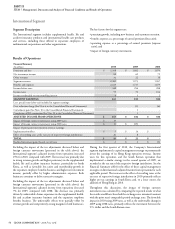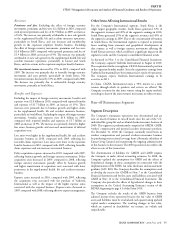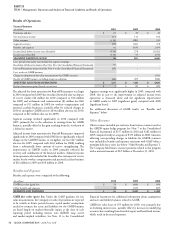Cigna 2010 Annual Report Download - page 66
Download and view the complete annual report
Please find page 66 of the 2010 Cigna annual report below. You can navigate through the pages in the report by either clicking on the pages listed below, or by using the keyword search tool below to find specific information within the annual report.
CIGNA CORPORATION 2010 Form 10K
46
PART II
ITEM 7 Management’s Discussion and Analysis of Financial Condition and Results of Operations
Balance Sheet Caption/Nature of Critical
Accounting Estimate Assumptions/Approach Used E ect if Di erent Assumptions Used
Investments — Fixed maturities
Recognition of losses from “other- than-
temporary” impairments of public and private
placement fi xed maturities
To assess whether a fi xed maturity’s decline in
fair value below its amortized cost is other than
temporary, the Company evaluates the expected
recovery in value and its intent to sell or the
likelihood of a required sale of the fi xed maturity
prior to an expected recovery.
When the Company does not expect to recover a
fi xed maturity’s amortized cost, its fair value and
expected future cash fl ows must be estimated by
management to record an impairment loss. e
credit portion of an impairment loss is recognized
in shareholders’ net income and measured as the
diff erence between a fi xed maturity’s amortized
cost and the net present value of its projected
future cash fl ows. e non-credit portion, if
any, is recognized in a separate component of
shareholders’ equity.
See Note 2 (C) to the Consolidated Financial
Statements for additional information regarding
the Company’s accounting policies for fi xed
maturities.
When evaluating whether a loss is other than
temporary, the Company considers factors
including:
•length of time and severity of decline;
• fi nancial health and specifi c near term
prospects of the issuer;
• changes in the regulatory, economic or general
market environment of the issuer’s industry or
geographic region; and
• the Company’s intent to sell or the likelihood
of a required sale prior to recovery.
Management estimates other-than-temporary
impairments based on fair values using quoted
market prices for public securities with active
markets and generally the present value of future
cash fl ows for private placement bonds and other
public securities. Expected future cash fl ows for
each fi xed maturity are based on the Company’s
assessment of qualitative and quantitative factors,
including the probability of default, and the
estimated timing and amount of any recovery in
value. See Note 11 to the Consolidated Financial
Statements for a discussion of the Company’s fair
value measurements.
e Company recognized other -than- temporary
impairments of investments in fi xed maturities as
follows (in millions, after-tax):
•2010— $1
•2009 — $31
•2008 — $138
See Note 12 to the Consolidated Financial
Statements for a discussion of the Company’s
review of declines in fair value.
For all fi xed maturities with cost in excess of their
fair value, if this excess was determined to be
other-than-temporary, shareholders’ net income
for the year ended December 31, 2010 would
have decreased by approximately $51 million
after-tax.
For private placement bonds considered impaired,
a decrease of 10% of all expected future cash
fl ows for the impaired bonds would reduce
shareholders’ net income by less than $1 million
after-tax.




